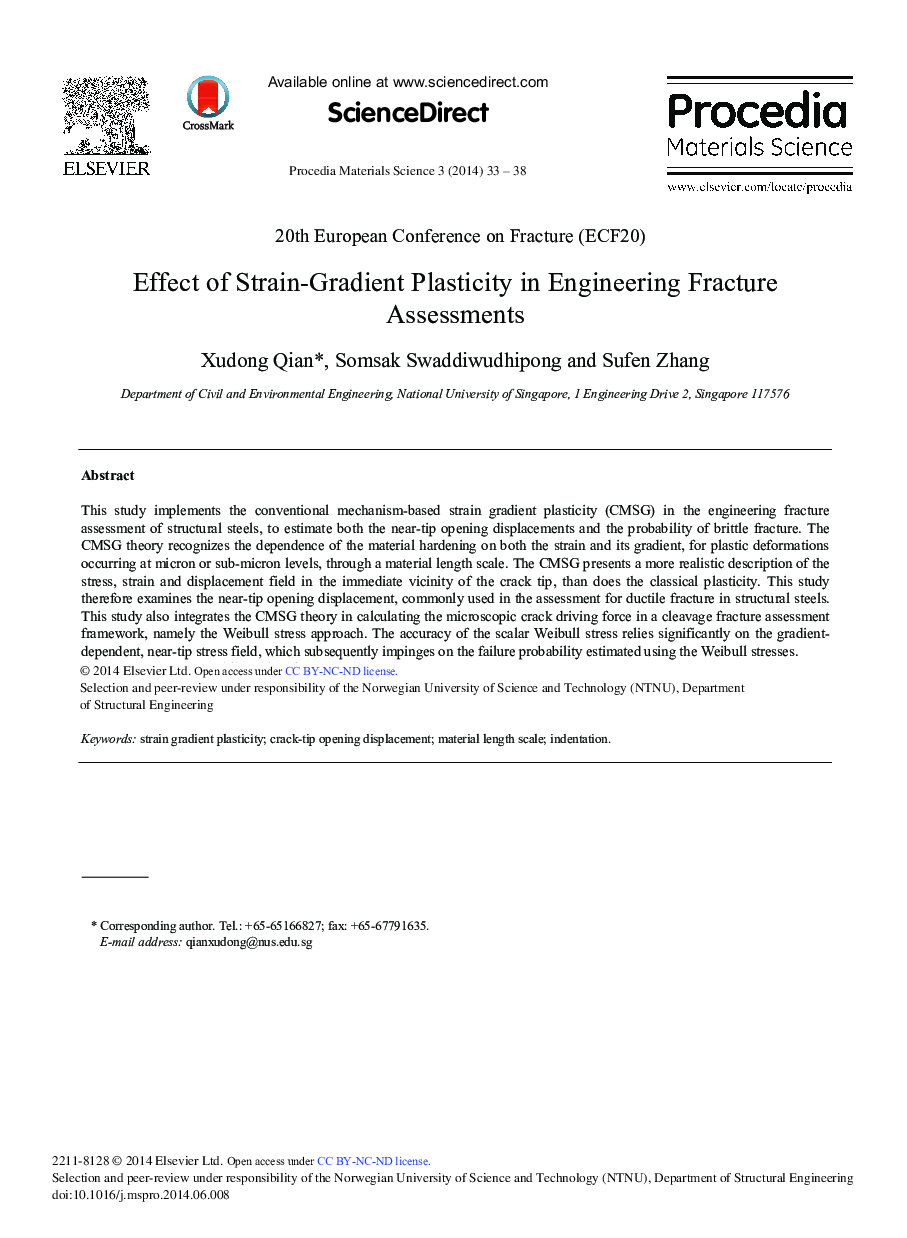| Article ID | Journal | Published Year | Pages | File Type |
|---|---|---|---|---|
| 1634751 | Procedia Materials Science | 2014 | 6 Pages |
This study implements the conventional mechanism-based strain gradient plasticity (CMSG) in the engineering fracture assessment of structural steels, to estimate both the near-tip opening displacements and the probability of brittle fracture. The CMSG theory recognizes the dependence of the material hardening on both the strain and its gradient, for plastic deformations occurring at micron or sub-micron levels, through a material length scale. The CMSG presents a more realistic description of the stress, strain and displacement field in the immediate vicinity of the crack tip, than does the classical plasticity. This study therefore examines the near-tip opening displacement, commonly used in the assessment for ductile fracture in structural steels. This study also integrates the CMSG theory in calculating the microscopic crack driving force in a cleavage fracture assessment framework, namely the Weibull stress approach. The accuracy of the scalar Weibull stress relies significantly on the gradient- dependent, near-tip stress field, which subsequently impinges on the failure probability estimated using the Weibull stresses.
